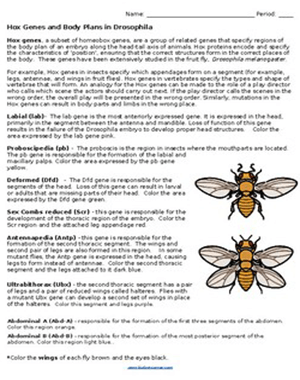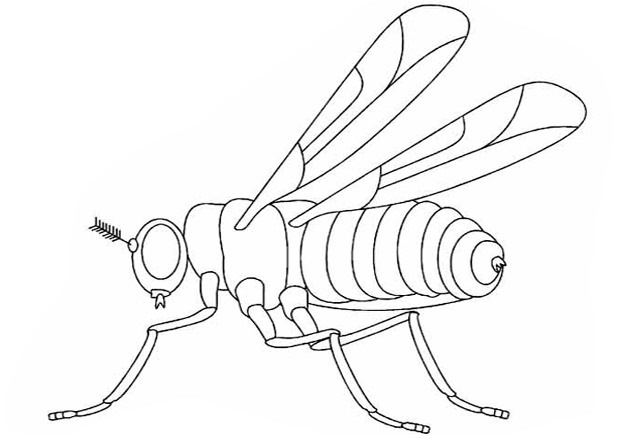
Homeobox (Hox) genes are responsible for the development of body plans in organisms. Genes in this group determine the number of segments, location of appendages, and the general anterior to posterior orientation. Mutations in this group of genes can lead to profound developmental abnormalities, like a fly that has legs for antennae!
Amazingly, these genes are found across all organisms in the animal kingdom. Duplications in these genes can lead to changes at a species level through natural selection. Animals can have extra segments, extra mouthparts, and unique body plans.
Biologists have extensively studied hox genes in Drosophila melanogaster, the fruit fly. These studies have identified several mutations in genes, often abbreviated for simplicity. These genes are also associated with human diseases, like cancer. (See: The pathophysiology of Hox Genes)
The Hox Genes
For example, the Ubx, or ultrabithorax, is a gene responsible for the thorax region. A duplication in this region can result in a fly that has an extra set of wings.
A mutation in the Antp, antennapedia gene, can result in legs growing in the place of antenna.

In this activity, students color the regions of the fly associated with each Hox gene. They compare a normal fly to two mutants: Ubx and Antp (legs for antenna). The color-coding of the flies reveals how each area of hox genes is responsible for the development of a specific segment.
This worksheets is not very challenging and probably something you can do with your class and 10 minutes with a short discussion on hox genes. For a more challenging exercise, students complete the case study on cystic fibrosis mutations.
I discuss Homeobox genes with the chapter on gene expression, though Openstax doesn’t address this concept until Chapter 27, Animal Kingdom. For reading, I direct students to Learn.Genetics which has a great article on Hox genes.

